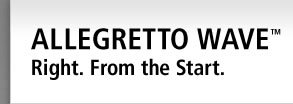Lasik Treatment
You can trust our experience to create a customized treatment for you. We offer multiple laser technologies so we can offer the latest and most advanced lasers as well as more affordable alternatives. By matching your unique eye anatomy and prescription with the right technology, we can achieve the best possible outcome for you.
(Click here for a brief video about the technology at LASIK of Nevada.)
Ziemer Z-LASIK Laser Technology
Z-LASIK is a LASIK procedure performed with the Ziemer FEMTO LDV Femtosecond Surgical Laser in conjunction with an advanced excimer laser system. With the combined use of a state-of-the-art excimer laser system and advanced diagnostic equipment, Z-LASIK provides the best currently available treatment option for superior vision correction.
The Blade-Free Z-LASIK Experience combines two exciting technological advances that offer patients the possibility of achieving better than 20/20 vision. These technological advances are: the Ziemer FEMTO LDV Femtosecond Laser for creating the flap, and an advanced excimer laser system for a personalized laser vision correction procedure.
Patient benefits include:
- Custom-tailored precise corneal flap creation
- Less worry about surgical complications
- More comfortable procedure
- Quicker visual recovery
- More likely to achieve 20/20 or better vision
- Shorter treatment times
- Larger treatment zones
We’ve invested in the FEMTO LDV laser because our patients are worth it!
Allegretto Laser Technology
 This groundbreaking new technology maximizes visual outcomes and at the same time improves night vision by preserving the cornea’s natural Prolate (curved) shape. We are Nevada’s first and most experienced Allegretto laser provider, and were the exclusive provider of this technology in Nevada for over three years. As a result, we have more experience with this technology that anyone in Nevada. Dr. Rothman is also a certified national trainer for this technology and has trained military surgeons across the country to provide this exciting technology to our soldiers.
This groundbreaking new technology maximizes visual outcomes and at the same time improves night vision by preserving the cornea’s natural Prolate (curved) shape. We are Nevada’s first and most experienced Allegretto laser provider, and were the exclusive provider of this technology in Nevada for over three years. As a result, we have more experience with this technology that anyone in Nevada. Dr. Rothman is also a certified national trainer for this technology and has trained military surgeons across the country to provide this exciting technology to our soldiers.
This new laser technology has several noteworthy benefits. With other lasers, successful treatment of high or complex prescriptions has sometimes been associated with night driving difficulties. The ALLEGRETTO WAVE™ laser is the only FDA-cleared LASIK technology specifically designed to provide a treatment that not only corrects a wide range of prescriptions, but also is designed to reduce nighttime glare after LASIK by maintaining the cornea’s natural shape following treatment.
Clinical studies submitted to the FDA in 2003 showed that nearly 90 percent of patients had no increase in glare, halos, or light sensitivity at night, and nearly 20 percent of patients actually reported improved night-vision following treatment with this laser system. Dr. Rothman noted that no other conventional LASIK treatment takes into account the unique curve and slope of each individual’s cornea.
An additional benefit for patients is the speed of the laser treatment itself. By delivering 200 laser pulses per second, the ALLEGRETTO WAVE™ reduces the time spent by the patient under the laser resulting in reduced corneal dehydration, or drying out, of the eye surface. This is better for patients since these faster treatments can be completed before the corneal surface is altered by drying – potentially allowing for more precise visual outcomes.
NIDEK laser technology
This well-established technology allows the surgeon to create customized treatment zones which are matched to your individual prescription, pupil size, and corneal thickness to achieve excellent results. Dr. Rothman has over 10 years of experience utilizing this technology.
WaveFront LASIK
Millions of people have reduced their dependence on eyeglasses and contact lenses over the past several years with the refractive procedure known as LASIK.
This procedure can correct refractive errors such as nearsightedness, farsightedness and astigmatism. Now an enhanced version of LASIK, known as wavefront LASIK, is available. This improved system allows eye surgeons to customize the procedure for each eye, providing the possibility of even better vision.
Adapted from technology used in astronomy, wavefront LASIK is a procedure that uses an array of microsensors and a laser. A wave of light from a laser beam is sent through the eye to the retina. This light is reflected out of the eye, and the sensor measures the irregularities at the front of the wave of light as it emerges from the eye. This produces a precise three-dimensional map of the visual system, including the cornea’s imperfections, or aberrations. Thousands of people have the same eyeglass prescription, but because the map is so precise, no two people have the same wavefront measurements.
These wavefront data are translated into a mathematical formula the surgeon uses to program corrections into the ultraviolet cold laser, which vaporizes tissue to reshape the cornea. This new wavefront technology has a better chance of reducing higher-order aberrations that cause glare, haloes and blurry images. All wavefront patients will have some higher-order aberrations after their procedure, and in fact some types of aberration may increase. However, wavefront technology is the best tool for quantifying aberrations, and wavefront LASIK results in far fewer aberrations than conventional LASIK.
Concerns about quality of vision and nighttime glare with previous forms of LASIK prevented many people from having their vision corrected. In Food and Drug Administration trials, the majority of patients who had custom LASIK found their night vision to be better after the procedure than it was with their glasses or contact lenses. One FDA study showed More than 70 percent of custom LASIK patients saw better than 20/20.
Wavefront LASIK may not be for everyone because it removes more corneal tissue than conventional LASIK. Patients with thin corneas, high degrees of aberration, severely dry eyes or conditions that affect the lens or vitreous fluid inside the eye may not be good candidates. However, many of these patients may still be good candidates for conventional LASIK. Have our LASIK of NEVADA staff check to see if wavefront LASIK is right for you.

Dr. Rothman Questions and Answers Regarding Wavefront.
- How long has Custom Wavefront LASIK been available?Wavefront aberration mapping and image enhancement has been used in astronomy for years. The actual theory was first developed in the 1930’s by a German physicist named Zernicke. The first wavefront mapping of the eye was performed in 1994. The FDA approved Custom Cornea wavefront guided LASIK in October 2002. In our research program, we have been studying corneal optics and optical outcomes for years, and have been working with corneal wavefront measurements since 1999.
- Since Custom Wavefront LASIK is a relatively new procedure, should I wait until it is more refined? Custom Wavefront LASIK is a technologic enhancement to conventional LASIK which may be advantageous to some people. From the surgical and patient viewpoint, however, the LASIK procedures are identical (although there is additional mapping in the custom procedure). Thus, if we find you to be a good candidate, you can be confident in our experience.
- Since Custom Wavefront LASIK is newest, shouldn’t everyone having LASIK elect the custom procedure?While custom LASIK may be very appropriate for some patients, it may not be necessary – or even appropriate – for other patients.
- After Custom Wavefront LASIK, will I see better than I do with contact lenses or glasses?In a certain percentage of custom LASIK cases, patients will see better than they did with their glasses or contact lenses. This is also true for conventional LASIK, though theoretically not as frequently. One needs to understand that although this vision improvement is possible, it is by no means guaranteed. It is still possible that you will not see quite as well as with your glasses or contacts.
- Is Custom Wavefront LASIK “safer” than conventional LASIK?When you read about claims that Custom Wavefront LASIK is “safer” than conventional LASIK, they usually are referring to the reduced likelihood of creating night vision or glare/halo problems. Such problems can be secondary to “higher order aberrations” or static in your eye. Since custom LASIK is designed to minimize this static, the hope is that the incidence of night vision problems will be minimized. Remember, though, most conventional LASIK patients have good night vision and some Custom LASIK patients could still suffer problems.
- For the patient, how does the Custom Wavefront LASIK experience differ from the standard procedure?The actual surgical experience for the patient is exactly the same as conventional LASIK. The difference comes in the pre-operative measurement of the wavefront aberration profile and the technique for programming the computer with your individual treatment parameters.
- Are the results of Custom Wavefront LASIK permanent?While we understand a great deal about the eye’s lower-order aberrations and their stability, we understand far less about its higher-order aberrations. So while the laser effects of custom LASIK should be stable and permanent, no one can yet predict how one’s higher-order aberrations will naturally change over the years.
- If I have large pupils is it required that I have Custom Wavefront LASIK?While there is a tendency for those with larger pupils to have a larger degree of higher-order aberrations, this is not always the case. Pre-operative wavefront measurements will determine this degree and whether custom LASIK would be recommended over conventional LASIK.
- I have already had LASIK and experience night vision disturbances. Can Custom Wavefront LASIK help me?Wavefront measurements of post-operative LASIK patients with such quality of vision complaints may demonstrate higher-order aberrations. Preliminary studies suggest that wavefront LASIK retreatments can reduce these aberrations, as well as subjectively improve these night vision and contrast sensitivity problems. Each patient needs to be individually assessed to make proper suggestions.
